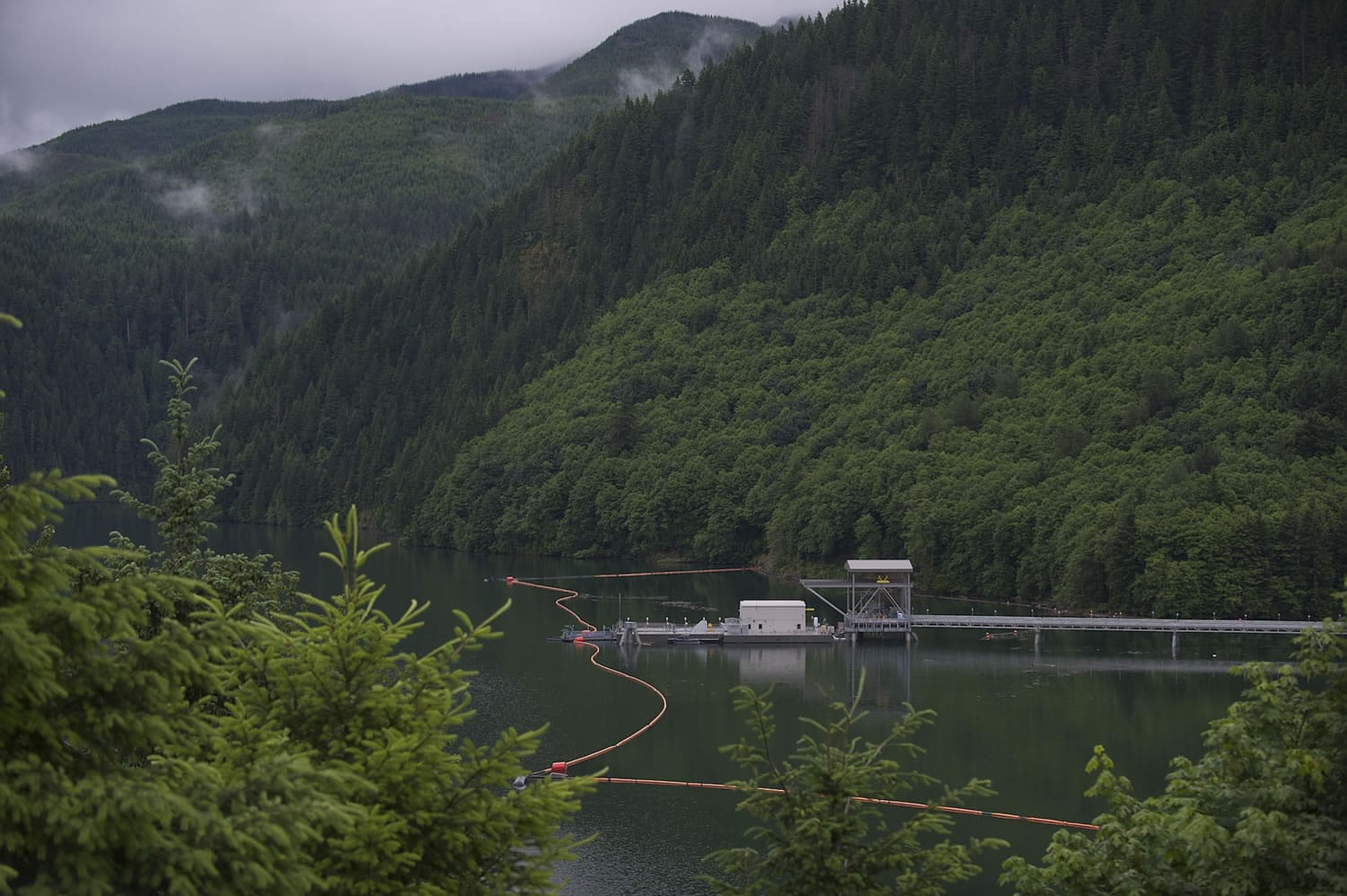ARIEL — The state Department of Fish and Wildlife expects to be short about 55,000 young spring chinook for release in the North Fork of the Lewis River this fall and next spring.
That prompts the question: Should the shortage be in the lower Lewis River downstream of Merwin Dam or in the reintroduction program upstream of Swift Reservoir?
Eric Kinne, hatchery reform coordinator for the agency in Southwest Washington, told the Lewis River Aquatic Coordination Committee recently, the hatcheries on the North Fork need 1,350 spring chinook spawners to produce 1.25 million young salmon for release below Merwin and 100,000 for upstream of Swift.
But in 2014, the adult return to the North Fork of the Lewis was only 1,112 spring chinook.
PacificCorp’s 50-year federal license to operate the three Lewis River dams calls for reintroduction of spring chinook upstream of Swift Dam. The Aquatic Coordination Committee is a monthly meeting of PacifiCorp, state and federal fishery agencies, the Forest Service, Cowlitz PUD, Indian tribes and others.
If 1.1 million young spring chinook from the 2014 adults are released below Merwin as tentatively planned in October, and 150,000 more in the spring of 2016, then only 45,000 remain for release upstream of Swift in the spring of 2016.
“Do we short the upper or lower river?” Kinne asked the committee.
Spring chinook released upstream of Swift Dam acclimate in the upper watershed, then are collected during their downstream migration by a facility at the dam and trucked to a release point in Woodland.
The $65-million collector at Swift Dam began operation in December of 2012.
However, 2013 proved to be a rocky year for the Swift fish collection facility.
A storm tore holes in sections of the net near Swift Dam that help guide the young fish to the collector.
Kinne noted that 100,000 spring chinook smolts were planted upstream of Swift in 2014 and only 2,200 were captured at the dam and released in the lower North Fork of the Lewis.
Given those numbers, Kinne asked if it makes most sense to short the upper river.
Frank Shrier, principal scientist for PacifiCorp, said repairs to the net are complete. The number of spring chinook captured migrating out this year will provide more insight into the progress of the reintroduction effort, he added.
Kinne said a decision is needed before October on how to distribute the young from 2014 spawners. The fish would return as adults in 2018 and 2019.
Spring chinook are struggling in the North Fork of the Lewis River. Another weak return is forecast for 2015, with only 1,100 adults anticipated back.
“We need to increase this population,” Kinne said. “We’re shutting down fisheries and still not making brood.”
Temperatures in the North Fork of the Lewis River are not typical of a spring chinook stream due to the three reservoirs upstream of the hatcheries, he said.
Water temperatures in the 60s in October and November cause spring chinook to smolt early and want to head to the ocean. Smolting is the physiological process that makes anadromous fish capable of adapting to saltwater.
Kinne said the department tried releasing a portion of its spring chinook in fall of 2014 instead of waiting until this spring.
“The fall release this year was the best-looking fish that went out of the Lewis in a long time,” he said.
The Aquatic Coordination Committee made no recommendation on how to split the releases this fall and next spring. The group is expected to visit the topic again in August.




